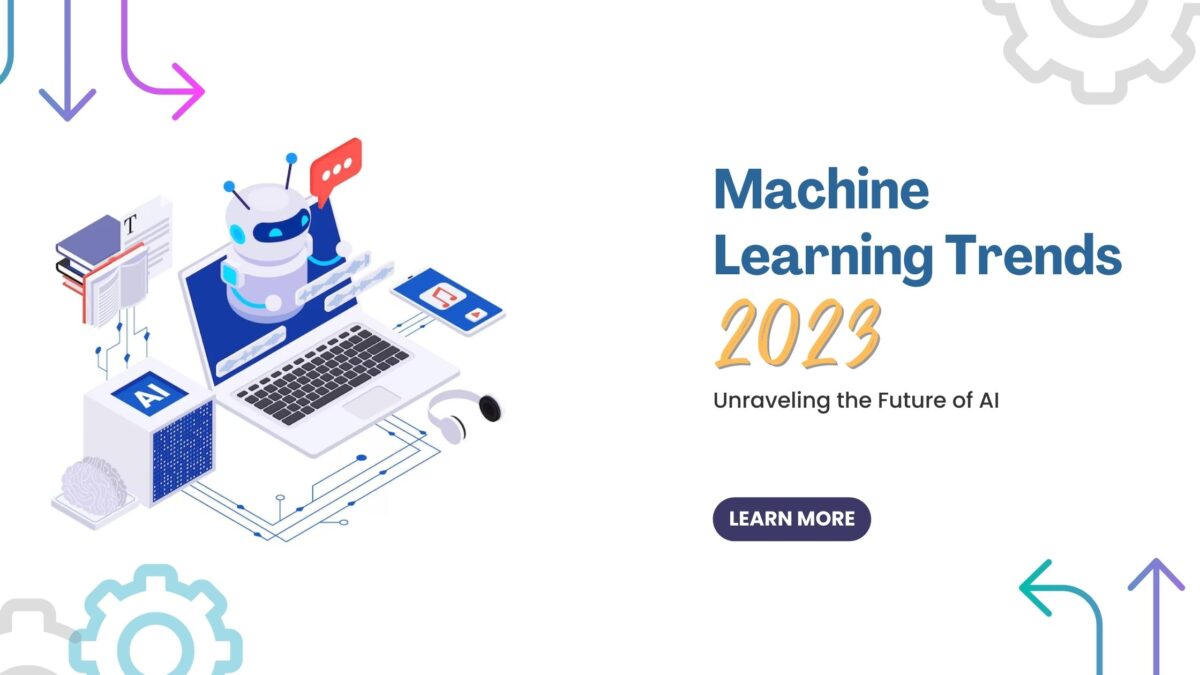The field of machine learning has been on a remarkable journey over the past decade, and the year 2023 promises to be no different. As we delve deeper into the advancements of artificial intelligence (AI), machine learning continues to shape the way we interact with technology and envision the future.
In this blog, we’ll explore the top machine learning trends expected to dominate the landscape in 2023, showcasing how these trends are reshaping industries and paving the way for a brighter AI-powered future.
1. Conversational AI and Natural Language Processing (NLP):
In 2023, we can expect Conversational AI and Natural Language Processing (NLP) to revolutionize the way we interact with machines. Virtual assistants, chatbots, and voice-controlled applications have already become part of our daily lives, but 2023 will witness even more sophisticated and context-aware conversational systems. The combination of advanced NLP models and deep learning techniques will enable machines to understand human language more accurately, offering a more seamless and personalized user experience.
These powerful conversational AI systems will find extensive applications across customer service, healthcare, education, and smart homes, making it easier for users to interact with technology naturally.
2. Edge AI and Federated Learning:
As the internet of things (IoT) expands, the demand for efficient and low-latency machine learning solutions is growing. Edge AI, the practice of deploying machine learning models directly on edge devices, will see substantial growth in 2023. By performing data processing and inference locally on devices like smartphones, wearables, and IoT sensors, Edge AI reduces the reliance on cloud-based services and minimizes privacy concerns.
Federated Learning, another emerging trend, complements Edge AI by allowing multiple devices to collaboratively train a shared machine learning model without sharing raw data. This distributed approach to machine learning development enhances privacy and security, making it a preferred choice for various industries dealing with sensitive user data.
3. Explainable AI:
As AI continues to permeate various aspects of our lives, the need for Explainable AI (XAI) becomes paramount. In critical applications such as healthcare, finance, and autonomous systems, understanding the reasoning behind AI decisions is essential. Researchers and developers are focusing on creating more interpretable and transparent machine learning models to enhance trust and accountability.
In 2023, expect to see significant advancements in the field of XAI, as techniques like model interpretability, feature attribution, and attention mechanisms become more prevalent. This development will not only make AI systems more reliable but also foster wider adoption of AI in industries that require regulatory compliance and ethical considerations.
4. AI in Drug Discovery:
The pharmaceutical industry is witnessing a seismic shift with the integration of AI and machine learning into drug discovery processes. In 2023, expect AI-powered drug discovery platforms to gain further prominence as they accelerate drug development, reduce costs, and enhance the success rate of clinical trials.
Machine learning models can analyze massive datasets and predict potential drug candidates, thereby streamlining the drug discovery pipeline. Additionally, AI-driven simulations can help understand molecular interactions and drug-receptor binding, guiding researchers towards more effective treatments for various diseases.
5. AutoML and Democratization of AI:
AutoML, or Automated Machine Learning, aims to make the development of machine learning models more accessible to a broader audience. In 2023, we will witness the democratization of AI, with platforms and tools that automate the entire ML workflow, from data preprocessing to model selection and deployment.
The automation of tedious and complex tasks enables data scientists and domain experts with limited ML expertise to build and deploy powerful AI solutions. This democratization will foster innovation in various industries, unlocking the potential of AI in domains that have traditionally lacked ML expertise.
Conclusion:
As we embark on a journey into 2023, the future of AI and machine learning appears bright and promising. Conversational AI and NLP will redefine human-machine interactions, while Edge AI and Federated Learning will empower IoT devices with smarter and more privacy-aware capabilities.
The focus on Explainable AI will make AI systems more transparent and trustworthy, boosting their adoption in critical applications. Additionally, AI’s integration in drug discovery and the democratization of AI through AutoML will bring about significant advancements and open up new opportunities for innovation.


